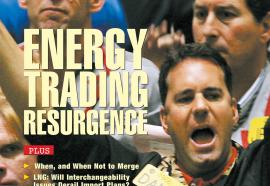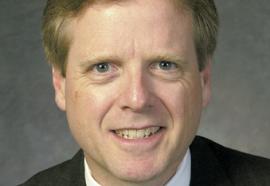The Merger Paradox
More consolidation could trim costs, but some CEOs fear a backlash from regulators.
With the possible exception of keeping the lights on, the merger game dwarfs just about every other question facing today’s electric utilities. The last big wave of consolidation hit in the late 1990s. Now the forecast calls for a repeat performance, but don’t bet the farm. There’s a hitch, you see. It’s today’s high commodity costs.






